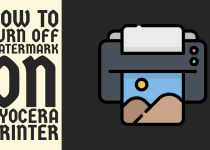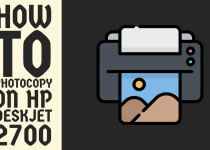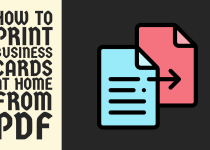How to Print Zip Files – 5 Easy Ways to Follow
In the digital realm, ZIP files are indispensable for managing and sharing large volumes of data. By compressing multiple files into a single archive, ZIP files not only conserve storage space but also streamline file transfers.
However, when it comes to printing the contents of a ZIP file, things can get a bit tricky. A ZIP file acts as a container, bundling different file types such as documents, PDFs, and images, which must first be extracted before you can print them.
Direct printing from a ZIP file is not possible because the contents are compressed, and printers are designed to handle uncompressed, individual files.
This article will guide you through various methods for printing ZIP file contents, whether you’re using Windows, macOS, or Linux. By the end, you’ll know exactly how to access and print your files, ensuring an efficient workflow.
How to Print Zip Files
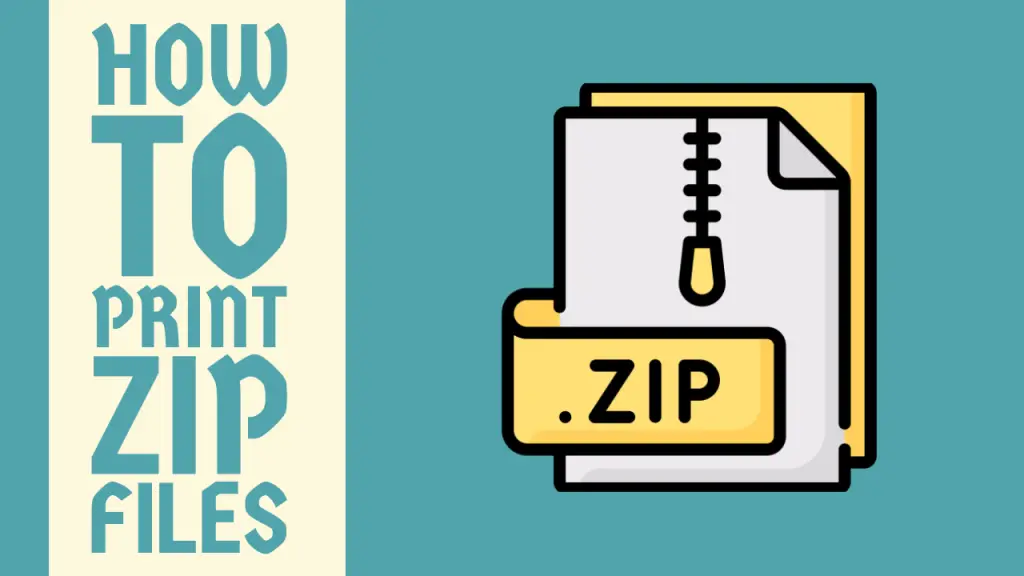
Whether you’re handling large reports, images, or detailed documents, we’ll cover everything from basic file extraction to using third-party tools, so you can print ZIP files with ease.
Method 1: Printing ZIP Files Using File Explorer (Windows)

Step 1: Locate the ZIP File
The first step is to find the ZIP file you want to print. It could be saved in your Downloads folder, Desktop, or any other location where files are commonly stored. Use Windows File Explorer to browse for the ZIP file by navigating through the directory.
Step 2: Right-Click and Select “Extract All”
Once you’ve located the ZIP file, right-click on the file and choose Extract All from the context menu. A dialog box will appear, prompting you to choose a destination where the files inside the ZIP will be extracted.
Step 3: Choose Extraction Location
In the dialog box, choose a folder where you want to extract the files. You can either stick to the default folder or create a new one for better organization. Click Extract to begin the process. The extraction time will depend on the file size and the number of files within the archive.
Step 4: Open the Extracted Files
Once the extraction is complete, navigate to the folder where the files were extracted. Open the file(s) you wish to print. This could be a Word document, PDF, image, or any other printable format.
Step 5: Print the Files
After opening the file you need to print, go to the File menu at the top-left corner of the application window and select Print. Choose your preferred printer from the list and adjust print settings such as page orientation, color, and the number of copies. Click Print to proceed.
Method 2: Printing ZIP Files Using Third-Party Tools (Windows & Mac)

There are various third-party tools available for handling ZIP files more efficiently. Some tools offer advanced features that make extracting, previewing, and printing files from a ZIP archive a seamless experience.
Step 1: Download and Install a Third-Party Archive Tool
Several programs, like 7-Zip, WinRAR, and PeaZip, are designed to manage ZIP files with additional features compared to the default system utilities. Download and install one of these programs from their official website.
Step 2: Open the ZIP File
After installation, right-click the ZIP file you want to print and choose Open with [Program Name]. These programs usually provide better file previews, allowing you to view the contents before extracting them.
Step 3: Preview the Files
With third-party tools, you can sometimes preview documents, images, and PDFs directly within the application before extracting them. This is useful if you’re unsure which files you need to print. However, for full printing, extraction is usually necessary.
Step 4: Extract the Needed Files
To print, you must first extract the relevant files from the ZIP archive. Right-click on the desired file and select Extract or choose an extraction option from the program’s toolbar.
Step 5: Print the Files
After extraction, open the file you want to print using the appropriate application (e.g., Word for DOCX files, Adobe Acrobat Reader for PDFs, etc.). Then follow the standard printing procedure by clicking File > Print.
Related Guide: How to Connect Canon TS3522 Printer to WiFi
Method 3: Printing ZIP Files on macOS

Step 1: Locate the ZIP File
To print ZIP file contents on a Mac, begin by locating the ZIP file using Finder. This is equivalent to Windows File Explorer and helps you navigate your file system.
Step 2: Double-Click to Extract
macOS has built-in support for ZIP files. Simply double-click the ZIP file, and the system will automatically extract the contents into a folder with the same name as the ZIP archive. You don’t need any additional software unless the ZIP file is password-protected.
Step 3: Access the Extracted Files
Once extraction is complete, open the folder where the files have been extracted. Find the document, PDF, or image you wish to print.
Step 4: Print the Files
To print, open the file with its respective application. For example, you can open a Word document with Microsoft Word or Pages and go to File > Print. For PDFs, you can use Preview or Adobe Acrobat Reader. Choose your print settings and click Print.
Method 4: Printing ZIP Files Directly from the Cloud

If your ZIP file is stored in the cloud (e.g., Google Drive, OneDrive, Dropbox), you can extract and print it without downloading it to your computer.
Step 1: Open Your Cloud Storage
Log into your cloud storage account where the ZIP file is stored. Navigate to the folder where the ZIP file is located.
Step 2: Preview the ZIP File (If Available)
Some cloud services, like Google Drive, allow you to preview certain types of files within a ZIP archive without extracting them. However, for most printable formats, you will need to download and extract the file.
Step 3: Download and Extract the ZIP File
If the cloud service doesn’t allow direct file previews for printing, download the ZIP file to your computer. Once downloaded, extract the contents following the steps for your operating system (Windows, macOS, or Linux).
Step 4: Open and Print the Files
After extracting the ZIP file, open the required documents and print them by selecting File > Print in their respective applications.
Related Guide: How to Print 2 Pages on 1 Sheet
Method 5: Printing ZIP Files Using Online ZIP Tools
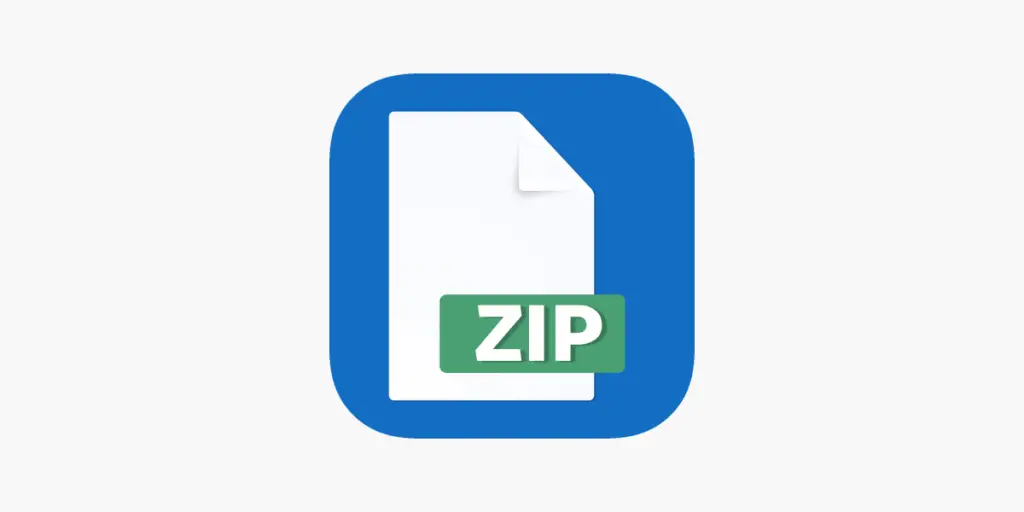
If you don’t want to install any software or extract the ZIP file on your local system, several online tools let you upload a ZIP file, preview its contents, and print them directly. Keep in mind, this method requires an active internet connection and may not be ideal for large ZIP files or sensitive documents.
Step 1: Visit an Online ZIP Tool
Search for an online ZIP file management tool that offers file extraction and preview options. These tools allow you to upload ZIP files directly to their website.
Step 2: Upload the ZIP File
Click on the upload button and select the ZIP file from your local system. Wait for the tool to process the file and display its contents.
Step 3: Select and Print the Files
After the files are displayed, select the document or image you want to print. Some online tools allow you to open the file in a browser window, from where you can directly print it by pressing Ctrl + P or selecting Print from the browser menu.
Conclusion
ZIP files make it easy to bundle multiple documents, images, or data into a single compressed archive. However, printing directly from a ZIP file isn’t possible. As demonstrated in this article, you first need to extract the files before printing. Whether you’re using Windows, macOS, Linux, or cloud storage platforms, each system provides straightforward methods for accessing and printing your files.
By following the steps outlined in each method, you can efficiently extract and print any document contained within a ZIP archive. Depending on your operating system or available tools, choose the method that works best for you. With this knowledge, managing and printing ZIP files will become a hassle-free experience.
Frequently Asked Questions (FAQs)
1. Why can’t I print a ZIP file?
Printing a ZIP file directly isn’t possible because it’s a compressed digital container, not a readable document. ZIP files store multiple files or folders in a compact format, using complex algorithms to reduce data size.
Printers are designed to process text and image files, not interpret compressed data. To print the contents of a ZIP file, you first need to extract the files within it using appropriate software. Once extracted, you can open and print individual documents or images as needed.
Attempting to print a ZIP file would result in unintelligible characters or errors, as the printer can’t decipher the compressed information.
2. Can I convert a ZIP file to PDF?
Converting a ZIP file directly to PDF isn’t possible because they serve different purposes. A ZIP file is a compressed container holding multiple files, while a PDF is a document format. However, you can achieve a similar result by extracting the ZIP contents and then combining them into a PDF. First, unzip the file using appropriate software.
Then, if the extracted files are compatible (like images or documents), you can use PDF creation tools to merge them into a single PDF. This process essentially “converts” the ZIP contents into a PDF, though it’s not a direct conversion. Always check the extracted files to ensure they’re suitable for PDF conversion.
3. What is the easiest way to unzip a ZIP file?
The easiest way to unzip a ZIP file depends on your device and operating system, but it’s generally a straightforward process. On Windows, you can simply right-click the ZIP file and select “Extract All.” For Mac users, double-clicking the ZIP file automatically extracts its contents.
Many smartphones and tablets can also handle ZIP files natively – just tap the file and choose to extract it. If you need more control or features, free software like 7-Zip or WinZip offers user-friendly interfaces for managing compressed files.
These tools allow you to preview contents, selectively extract files, and handle various compression formats. For occasional use, online unzipping tools can be convenient, though be cautious with sensitive data.

